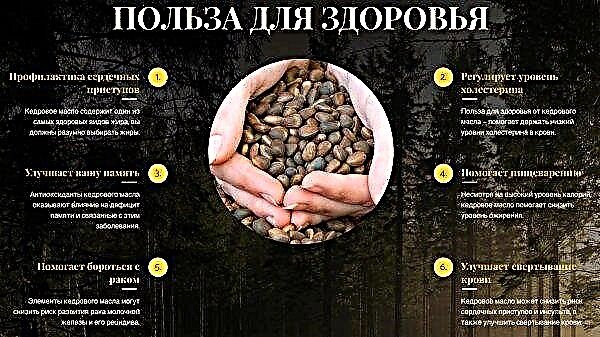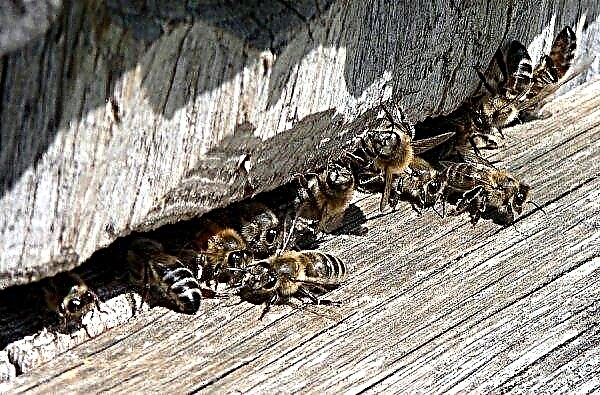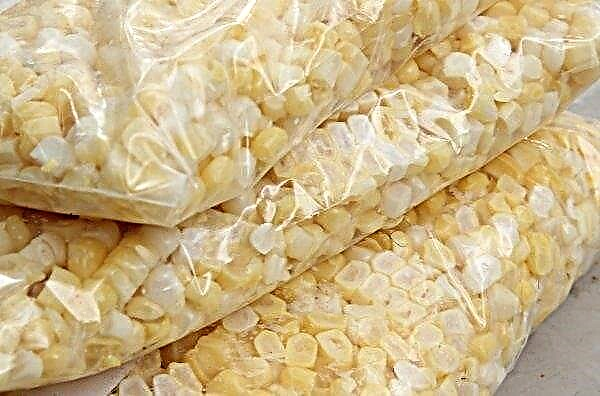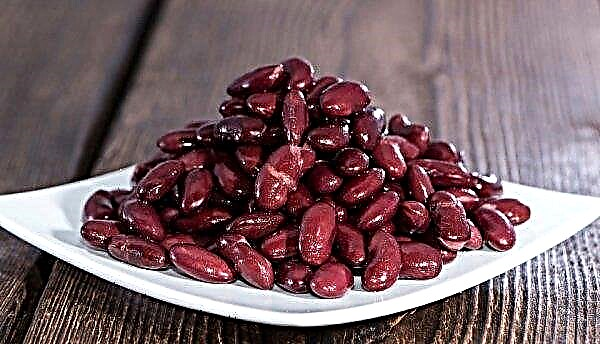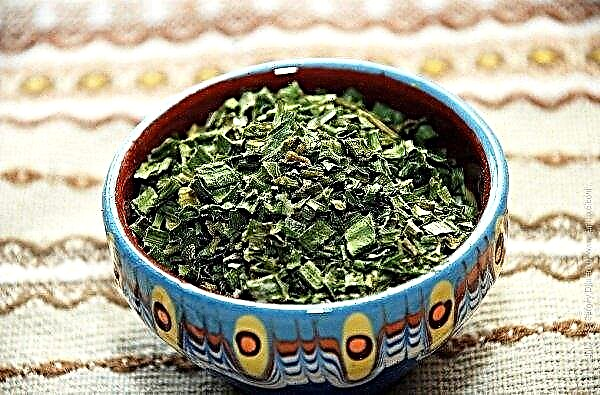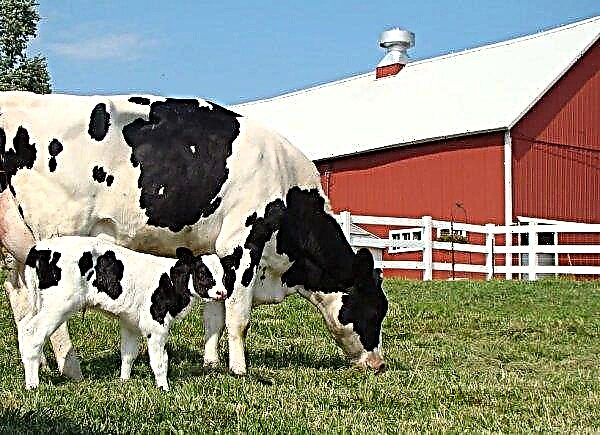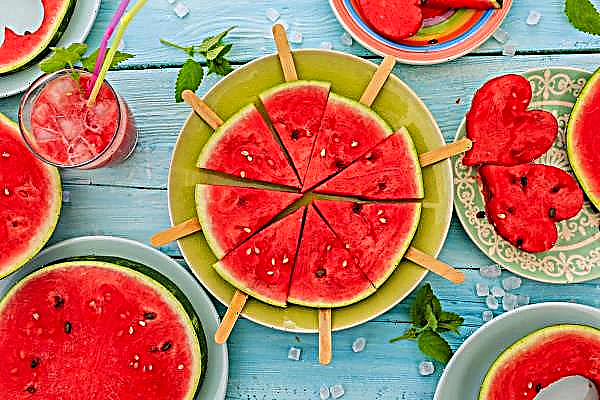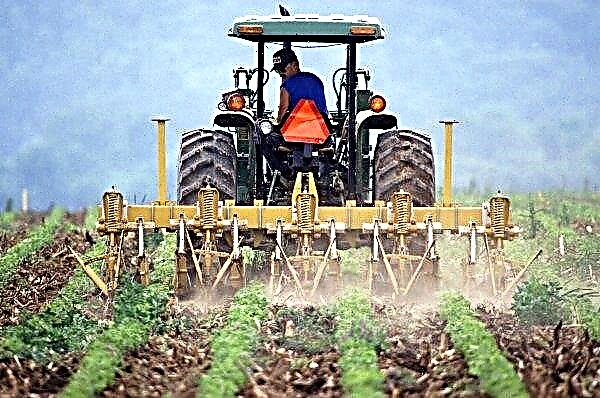Most owners of suburban areas spend 90% of planting in the spring, when the land warms up. But there are cultures that are better to winter in the ground. From this they only become stronger and give a larger crop. And these include onions.
Pros and cons of winter onion planting
- There are a number of undeniable advantages of such a landing:
- The plant in the cold earth undergoes natural hardening under the snow, and spring frosts are no longer afraid of it.
- Early germination, which means the ability to get the crop more quickly.
- For onions, the worst pest is an onion fly. And planted in the fall, he manages to grow stronger by the time this pest is actively attacking, and the enemy is not so terrible for him.
- If you buy seeds on the market, then in the fall you can save money - buy a small sevka the size of a nail. It is much cheaper, and it turns out a lot.
- The shallow set does not let the arrows.
- With winter cultivation, less time is spent in the spring on weed removal. By the time they grow actively, the onion is already quite strong and grown, and the grass does not drown it. Yes, and weave it easier.
Did you know? Today, there are about 900 types of onions. They grow not only in home areas, but also in the wild. Only 228 varieties are vegetable crops.
- Cons of this landing method:
- You need to correctly calculate the landing time. It all depends on the weather, and it is often unpredictable.
- We’ll have to plan from the fall what and where it will grow in the garden in order to properly position the garden.

Planting onions for the winter
Before sending the bulbs into the ground, they must be properly prepared, choose a suitable place for the beds and familiarize yourself with the rules of planting.
Bulb preparation
The first thing to do is to sow the seeds, to discard the dry and spoiled ones. Then carry out its disinfection. Unlike spring planting, when it is kept in a solution of potassium permanganate or any other for at least 30 minutes, in the fall the exposure time is reduced to 5-10 minutes. This is due to the fact that longer aging in water will lead to faster germination, and in autumn this is completely unnecessary.
You can use a solution of potassium permanganate, or you can use a solution of salt and copper sulfate. Take two containers of 2 liters, dissolve a tablespoon of salt in one, and the same amount of vitriol in the other. Bulbs are kept for 5 minutes in saline, and then 5 minutes in vitriol. After that, they are dried well. Now you can go to the garden.
Choosing a place and preparing the garden
The landing site is chosen sunny and elevated. If you make a bed in the lowland, then in the spring, when the snow begins to melt and the groundwater rises, the onion can simply rot. If the entire plot is in a lowland, then you can make the bed higher artificially. The composition of the soil is also important for this vegetable. It should not be clay, loose, slightly acidic and nutritious. The selected place is dug on a bayonet of a shovel with the addition of ash. If the soil is not fertile, then rotted manure or compost is introduced. Further, the soil is loosened with a rake so that there are no large lumps of earth.
It should not be clay, loose, slightly acidic and nutritious. The selected place is dug on a bayonet of a shovel with the addition of ash. If the soil is not fertile, then rotted manure or compost is introduced. Further, the soil is loosened with a rake so that there are no large lumps of earth.
Crop rotation rules
To get a good crop, it is important to follow crop rotation rules. In this case, peas, corn, mustard, all crops, beets, tomatoes, canola, lettuce, cabbage are well suited. Onions are afraid of nematodes, so they are not planted after potatoes, parsley, beans, celery, alfalfa. It is advisable not to grow it in one place for more than two years and take a break of 4 years until the next planting.
Did you know? Inhaling the smell of onions, eating them, and even tears during slicing helps to fight the formation of cancer cells in the human body. This has been proven by various studies.
Landing technology
When planting in autumn, it’s important to guess with time. So that the onion could take root, but did not have time to sprout, you need to plant it a month before the frost, so it all depends on the terrain. In the middle lane, landing time is early November. At the prepared site, rows are made with a depth of about 5 cm. The earth needs to be watered, it is possible with a potassium permanganate solution to kill harmful organisms. When the water is absorbed, gently lower the seeds into the ground, retreating 5-6 cm apart. In general, the larger the bulbs are needed, the greater the distance between them should be. Rows from each other are arranged so that it is convenient to pass between them and weeds - 15–20 centimeters from one another. After planting, markings are set on both sides of the row, so that in the spring they know exactly where the greens should appear, and the plantings are covered with earth.
When the water is absorbed, gently lower the seeds into the ground, retreating 5-6 cm apart. In general, the larger the bulbs are needed, the greater the distance between them should be. Rows from each other are arranged so that it is convenient to pass between them and weeds - 15–20 centimeters from one another. After planting, markings are set on both sides of the row, so that in the spring they know exactly where the greens should appear, and the plantings are covered with earth.
Onion care after planting in the winter
Having planted winter onions, they forget about it until spring. But when the snow falls, he will remind himself.
Emergence of seedlings
Shoots of winter plantings appear very early, as soon as the soil thaws. Therefore, when the snow is still lying, but it is already scarce, nitrogen-containing fertilizer can be scattered directly on the snow, and after its complete melting, the beds are sprinkled with ash. Already in mid-April, it will be clear how well the landings have ascended. Where empty places can be annoyed.
Loosening and thinning
The soil begins to loosen as soon as green shoots appear. If a crust forms on the ground, then the roots do not receive enough oxygen, and the plant will turn yellow and stop growing. Weeding is carried out as the weed grows. If the soil is loose, you can just pick out the weeds with your hands, and if it is heavy enough, then be sure to weed with a chopper. Also need loosening after each watering and rain.
Weeding is carried out as the weed grows. If the soil is loose, you can just pick out the weeds with your hands, and if it is heavy enough, then be sure to weed with a chopper. Also need loosening after each watering and rain.
Important! To get a good turnip crop, you need to make sure that the onion is not covered with soil. If you deepen it, the feather begins to grow, and the turnip will be weak.
How to feed
The first top dressing is done even in the snow - with wood ash. The next one - already 3 weeks after the first one in this proportion: 100 g of superphosphate, 60 g of nitrate and 20 g of potassium chloride are enough for 1 square meter. The next top dressing - after another 3 weeks already without superphosphate, saltpeter is left the same, and potassium chloride is doubled.
These norms help accelerate the ripening of bulbs. If onions are needed early for use in food, then natural fertilizers are used - chicken droppings or mullein. Be sure to apply any fertilizer only in moist soil.
Watering
Onion - the plant is not too hygrophilous. He does not tolerate excess moisture well. And planted before winter, he managed to absorb enough water. However, if it has not rained for more than 3 weeks, then it should be watered with hot water in the sun. Watering is carried out 1-2 times a week and stopped 3 weeks before the expected harvest, so that the turnips do not begin to rot and stop growing greenery.
Protection against diseases and pests
The main pest of this vegetable is the onion fly - although small, it is quite capable of dying the entire crop.
To protect it, you must:
- decontaminate the soil. Suitable ash or a mixture of sand with naphthalene - 20 to 1;
- regularly weed beds;
- if there is a lot of pest, then you can pickle the plants insecticidessuch as “Aktara” or “Flies”. Only green onions will have to be forgotten, because eating it is dangerous to health;
- along the perimeter of the garden can sow calendula - the fly does not love her.
Do I need to shelter landing for the winter
Since the onions are planted shallowly, there is a risk that if frost breaks out and the snow does not fall, the plantings will freeze. To prevent this, it is better to cover the beds with available materials. Spruce spruce branches or straw are well suited. Dry stalks of marigolds, Jerusalem artichoke, and corn will also work. You can mulch peat or sawdust. Good protection against frost and at the same time fertilizer is dry cow dung. It is collected in advance, crushed with a shovel and crushed with a layer of 5 cm in the garden. But it is not worth sheltering with dry leaves, since harmful insects are hiding in them, and there will also be spores of various fungal diseases on them. It so happens that there were no frosts yet, but snow fell. Then you can do without shelter, because under a layer of snow the frost will not be so terrible.
Good protection against frost and at the same time fertilizer is dry cow dung. It is collected in advance, crushed with a shovel and crushed with a layer of 5 cm in the garden. But it is not worth sheltering with dry leaves, since harmful insects are hiding in them, and there will also be spores of various fungal diseases on them. It so happens that there were no frosts yet, but snow fell. Then you can do without shelter, because under a layer of snow the frost will not be so terrible.
Important! With the advent of spring, shelter is quickly removed, since under it the garden bed does not warm well and the first sprouts appear late.
In the southern regions, the question of whether to cover the onions is, in principle, not worth it, since the soil there rarely freezes. Planting onions for the winter has proven itself in gardeners and allows you to get a consistently high yield. It is optimal to plant half of the seed set in autumn, and half to leave until spring. With proper care, the crop will surely please you.

